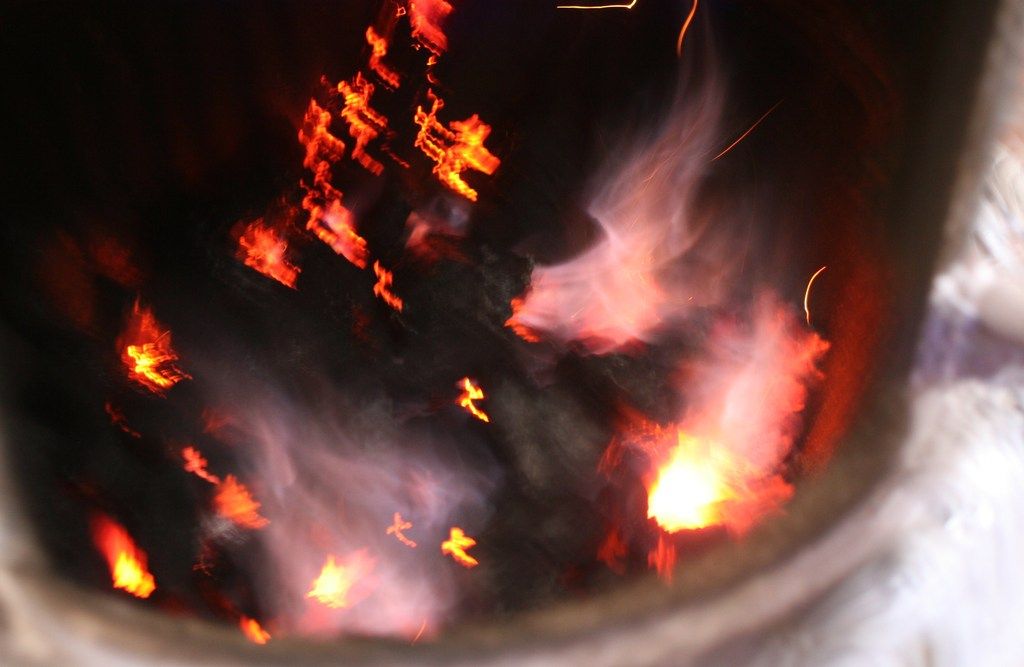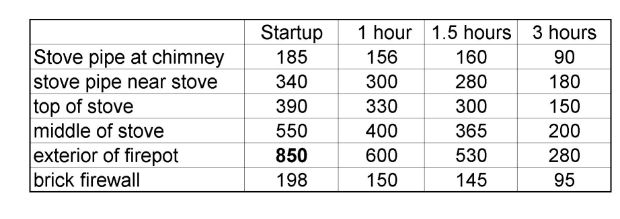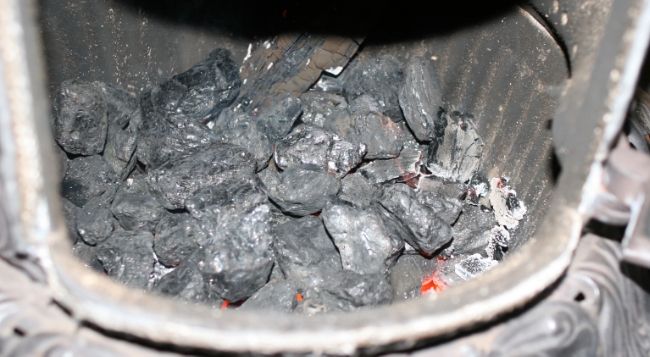These are the temperatures on my stove running nut coal from Tractor Supply:
At Startup :
Stove pipe temperature 185 F as the pipe enters the chimney.
Stove pipe temperature is 340 at the location where the pipe exits the stove.
Top part of the stove measures 390F
The middle of the stove's cylinder is 550F
The exterior of the fire pot (area where the coal rests) measures 850F
The back brick firewall temp is 190F nearest to the firebox
After an hour:
Stove pipe temperature 156 F as the pipe enters the chimney.
Stove pipe temperature is 300 at the location where the pipe exits the stove.
Top part of the stove measures 330F
The middle of the stove's cylinder is 400F
The exterior of the fire pot (area where the coal rests) measures 600F
The back brick firewall temp is 150F nearest to the firebox
After an hour and 30 minutes:
Stove pipe temperature 160 F as the pipe enters the chimney.
Stove pipe temperature is 280 at the location where the pipe exits the stove.
Top part of the stove measures 300F
The middle of the stove's cylinder is 365F
The exterior of the fire pot (area where the coal rests) measures 530F
The back brick firewall temp is 145F nearest to the firebox
After 3 hours the fire is really dying out:
Stove pipe temperature 90 F as the pipe enters the chimney.
Stove pipe temperature is 180 the location where the pipe exits the stove.
Top part of the stove measures 150F
The middle of the stove's cylinder is 200F
The exterior of the fire pot (area where the coal rests) measures 280F
The back brick firewall temp is 95 nearest to the firebox
Is that temp on the outside of the the firepot (850F) too high at startup? After about 30 minutes temperatures moderated down. But the exterior firepot temp after 30 minutes was still 600F. The other temps moderated. But am I outside the acceptable range? Do I need to shut the primary air down faster? I could not find many references to the fire box temp in the forum. Most references were for stovetop and stove pipe temps. What temperature are considered a good range to be in? Note: the firebox is not currently lined with a refractory material (a project for this summer). I don't plan running the stove again this season. I just wanted to get a feel for things. It is currently 29 F outside. The damper on the stove pipe to the flue is 3/4 closed. Running CO detectors in the house.






